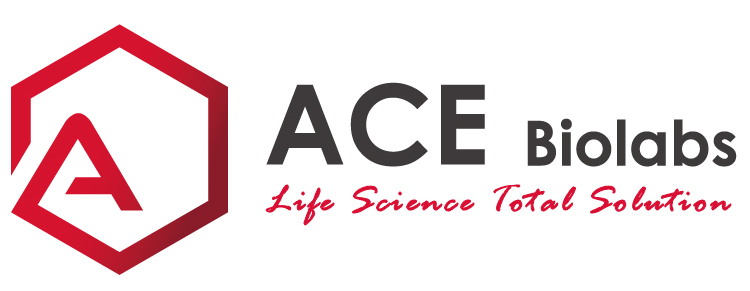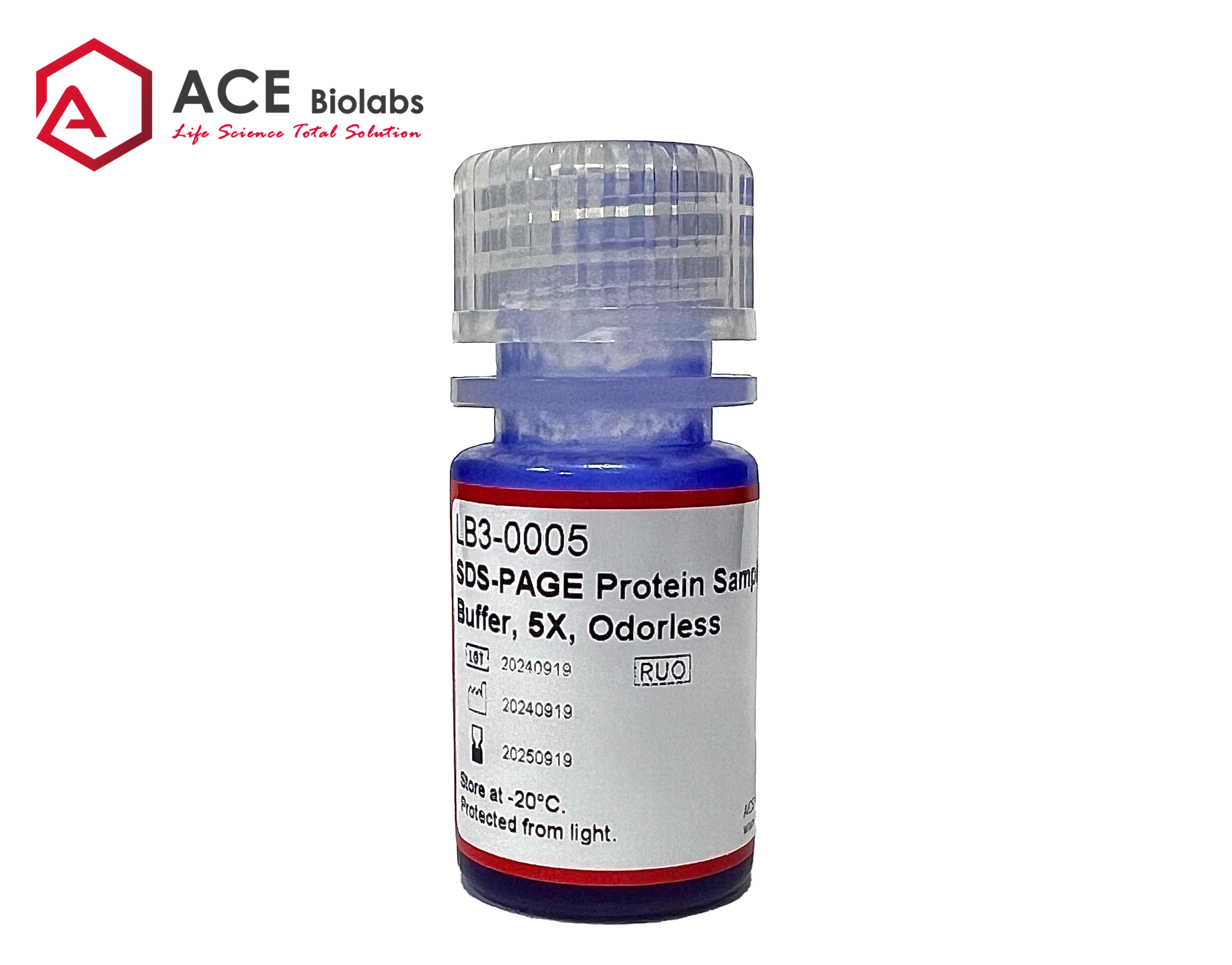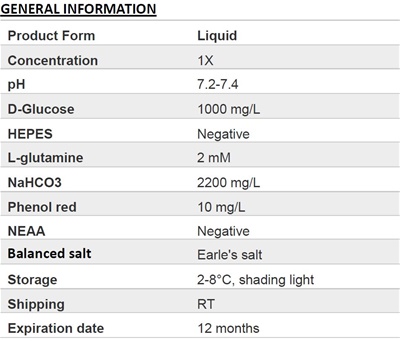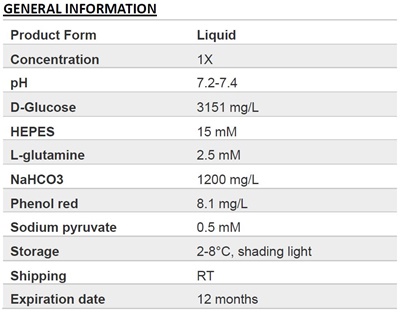Western Blotting, Electrophoresis
SDS-PAGE Protein Sample Loading Buffer (5X, Odorless)
- Catalog Number : LB3-0005
- Number : LB3-0005
-
Size:
Qty : - Price : Request 詢價
- Stock : Request
Introduction
General Information
| Storage instruction | Store at -20°C. Protected from light. |
|---|
Product Features
- Enhanced Safety: This product uses an odorless and more water-soluble stable reducing agent with similar reducing
power, replacing the pungent dithiothreitol (DTT) or 2-Mercaptoethanol. This ensures that the
SDS-PAGE protein sample loading buffer remains odorless during normal use or heating, making
the protein loading process safer and healthier.
- Consistent Performance: Besides being odorless, this product performs identically to conventional protein sample
loading buffers. It can be used for routine SDS-PAGE protein sample loading. No significant
differences have been observed in performance compared to traditional SDS-PAGE protein
sample loading buffers.
Usage Instructions
1. Dissolve the SDS-PAGE Loading Buffer (5X) at room temperature or in a water bath not exceeding 37℃. After dissolving
in the water bath, store immediately at room temperature and avoid prolonged exposure to the water bath.
2. Mix the protein sample and SDS-PAGE Loading Buffer (5X) in a ratio of 1 µL of loading buffer to 4 µL of protein sample.
3. Heat at 100℃ or in a boiling water bath for 3-5 minutes to fully denature the proteins.
• Note: If the initial cell or tissue amount is large and the genomic DNA content is high,
the solution may still be viscous or contain semi-transparent viscous substances after boiling for 3-5 minutes.
In this case, continue boiling for an additional 5-10 minutes or add an appropriate amount of 1X diluted
SDS-PAGE Loading Buffer and boil for another 3-5 minutes. Prolonged boiling helps to fully release proteins
bound to genomic DNA and partially break down genomic DNA, reducing viscosity and thus not affecting
subsequent sample loading.
4. After cooling to room temperature, load the sample directly into the wells of the SDS-PAGE gel.
5. Electrophoresis is typically stopped when the blue dye reaches the bottom of the gel.









.png)